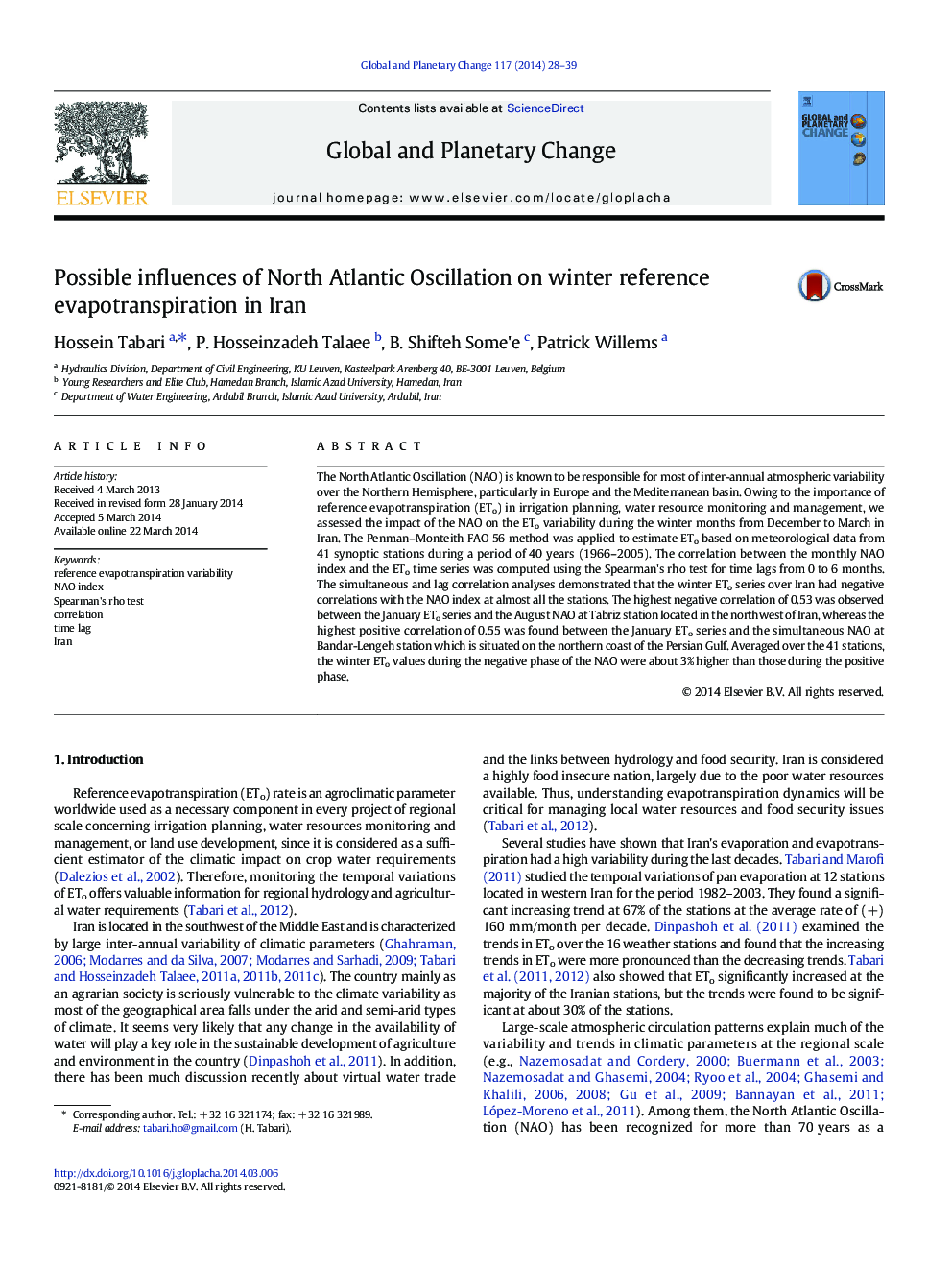| Article ID | Journal | Published Year | Pages | File Type |
|---|---|---|---|---|
| 4463440 | Global and Planetary Change | 2014 | 12 Pages |
•There is a negative correlation between winter ETo series and the NAO index.•Most of the lag correlations between the ETo series and the NAO index were negative.•The strongest lag-correlation was found at Tabriz station in the southwest of Iran.•A small number of the correlation coefficients are statistically significant.
The North Atlantic Oscillation (NAO) is known to be responsible for most of inter-annual atmospheric variability over the Northern Hemisphere, particularly in Europe and the Mediterranean basin. Owing to the importance of reference evapotranspiration (ETo) in irrigation planning, water resource monitoring and management, we assessed the impact of the NAO on the ETo variability during the winter months from December to March in Iran. The Penman–Monteith FAO 56 method was applied to estimate ETo based on meteorological data from 41 synoptic stations during a period of 40 years (1966–2005). The correlation between the monthly NAO index and the ETo time series was computed using the Spearman's rho test for time lags from 0 to 6 months. The simultaneous and lag correlation analyses demonstrated that the winter ETo series over Iran had negative correlations with the NAO index at almost all the stations. The highest negative correlation of 0.53 was observed between the January ETo series and the August NAO at Tabriz station located in the northwest of Iran, whereas the highest positive correlation of 0.55 was found between the January ETo series and the simultaneous NAO at Bandar-Lengeh station which is situated on the northern coast of the Persian Gulf. Averaged over the 41 stations, the winter ETo values during the negative phase of the NAO were about 3% higher than those during the positive phase.
